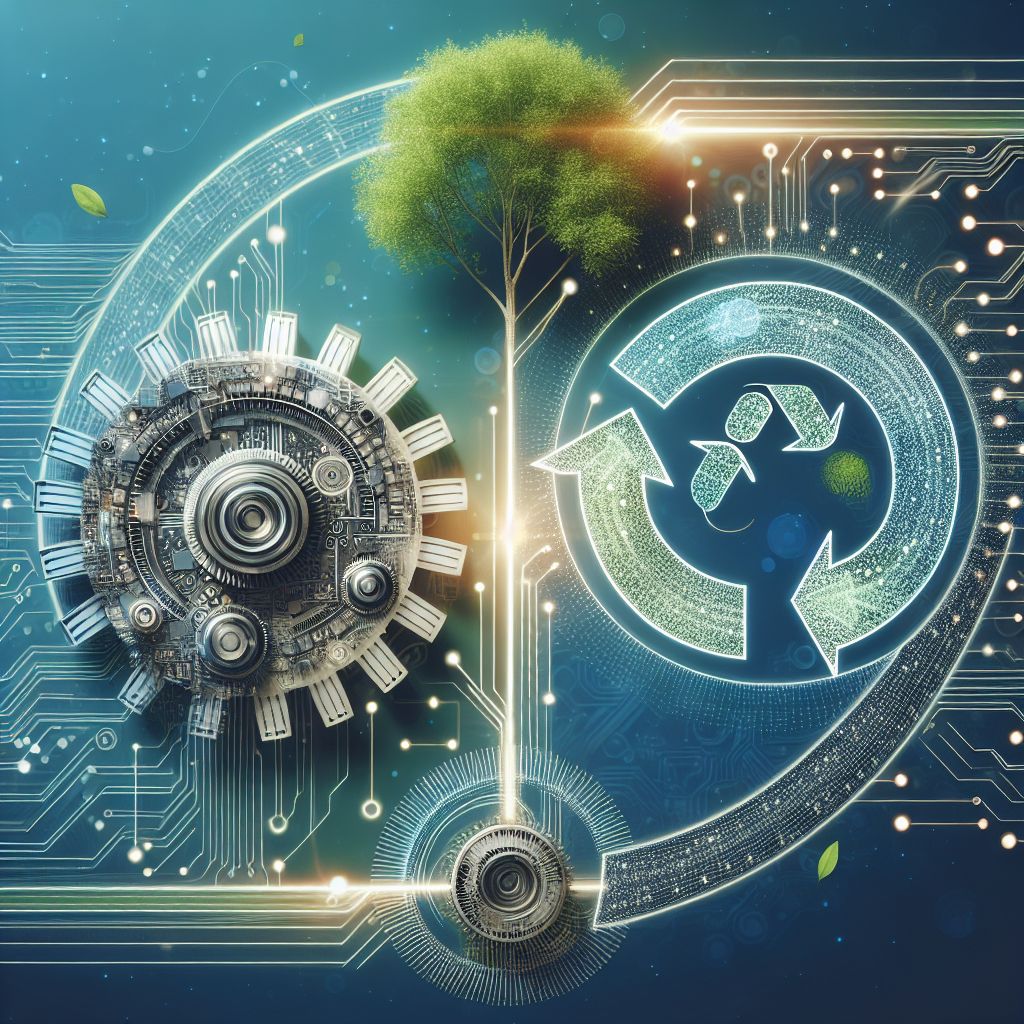The Intersection of AI and Circular Economy for Sustainability
The circular economy is a concept that focuses on reusing, repairing, and recycling products and materials to minimize waste and maximize resource efficiency. It is an approach that aims to create a closed-loop system where products and materials are continuously used and reused, rather than being disposed of after a single use. The circular economy is seen as a key strategy for achieving sustainable development and addressing the challenges of climate change and resource scarcity.
Artificial Intelligence (AI) is a rapidly advancing technology that has the potential to revolutionize many aspects of our society, including the way we produce, consume, and manage resources. AI can help optimize processes, increase efficiency, and drive innovation in various industries. When AI is combined with the principles of the circular economy, it has the potential to significantly enhance sustainability efforts and create a more resource-efficient and environmentally friendly economy.
AI and the circular economy are two powerful concepts that, when combined, can drive positive change and help address some of the most pressing environmental challenges facing our planet. In this article, we will explore the intersection of AI and the circular economy for sustainability and discuss how these two concepts can work together to create a more sustainable future.
How AI can support the circular economy
AI has the potential to support the circular economy in a variety of ways. One of the key benefits of AI is its ability to analyze large amounts of data and identify patterns and trends that humans may not be able to detect. This can help companies and organizations optimize their processes, reduce waste, and improve resource efficiency.
For example, AI can be used to optimize supply chains and logistics, helping companies reduce transportation costs, minimize energy consumption, and streamline operations. AI-powered predictive analytics can also help companies anticipate demand and better manage inventory, reducing the risk of overproduction and waste.
AI can also be used to improve the design of products and materials, making them more durable, easier to repair, and more recyclable. By using AI to analyze data on product usage and performance, companies can identify opportunities to extend the lifespan of products and reduce the amount of waste generated.
In the waste management sector, AI can help improve recycling processes by sorting and separating materials more efficiently. AI-powered robots and sensors can be used to identify and sort different types of materials, making recycling more cost-effective and reducing contamination in the recycling stream.
Overall, AI has the potential to revolutionize the way we produce, consume, and manage resources, making the circular economy more feasible and effective.
Challenges and opportunities
While AI has the potential to support the circular economy in many ways, there are also challenges that need to be addressed. One of the main challenges is the lack of data and standardization in the circular economy. In order for AI to be effective, it needs access to high-quality data on product lifecycles, material flows, and environmental impacts. Without this data, AI may not be able to make accurate and informed decisions.
Another challenge is the potential for AI to exacerbate inequality and social disparities. As AI becomes more prevalent in the economy, there is a risk that certain groups of people may be left behind or marginalized. It is important for policymakers and businesses to ensure that the benefits of AI are shared equitably and that vulnerable populations are not disproportionately affected.
Despite these challenges, there are also many opportunities for AI to support the circular economy and drive sustainability efforts. AI can help companies and organizations identify new business models, develop innovative products and services, and improve resource efficiency. By harnessing the power of AI, we can create a more sustainable and resilient economy that benefits both people and the planet.
FAQs
Q: How can AI help optimize supply chains in the circular economy?
A: AI can be used to analyze data on supply chain operations, identify inefficiencies, and optimize processes to reduce waste and improve resource efficiency. By using AI-powered predictive analytics, companies can better anticipate demand, manage inventory, and optimize transportation routes, leading to cost savings and environmental benefits.
Q: How can AI improve recycling processes in the circular economy?
A: AI-powered robots and sensors can be used to identify and sort different types of materials more efficiently, making recycling more cost-effective and reducing contamination in the recycling stream. AI can also help companies track and trace materials throughout the recycling process, ensuring that materials are recycled properly and can be reused in new products.
Q: What are some examples of AI applications in the circular economy?
A: Some examples of AI applications in the circular economy include using AI-powered robots to sort and separate materials in recycling facilities, using AI to optimize supply chain operations and reduce waste, and using AI to design products that are more durable, repairable, and recyclable. AI can also be used to analyze data on product lifecycles and environmental impacts, helping companies make informed decisions about resource use and waste reduction.
In conclusion, the intersection of AI and the circular economy holds great promise for driving sustainability efforts and creating a more resource-efficient and environmentally friendly economy. By harnessing the power of AI to optimize processes, improve recycling, and design more sustainable products, we can create a more sustainable future for generations to come.

